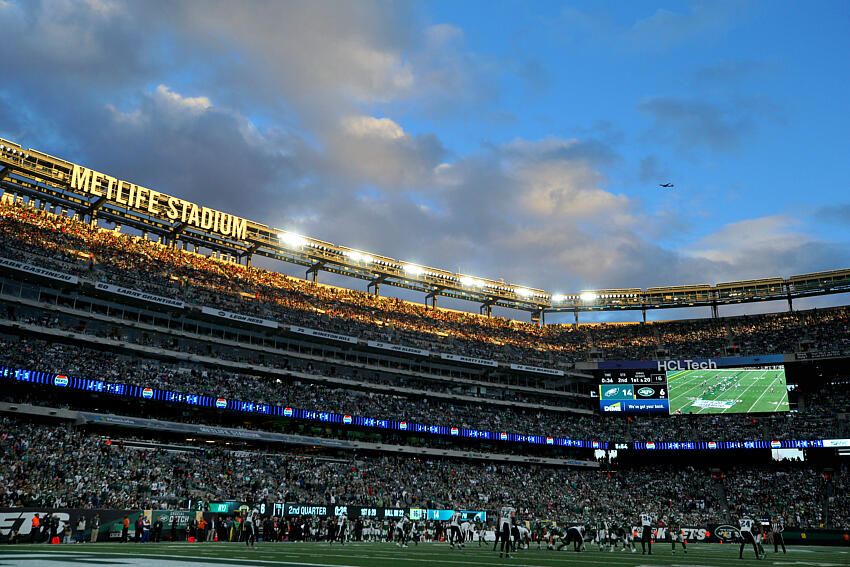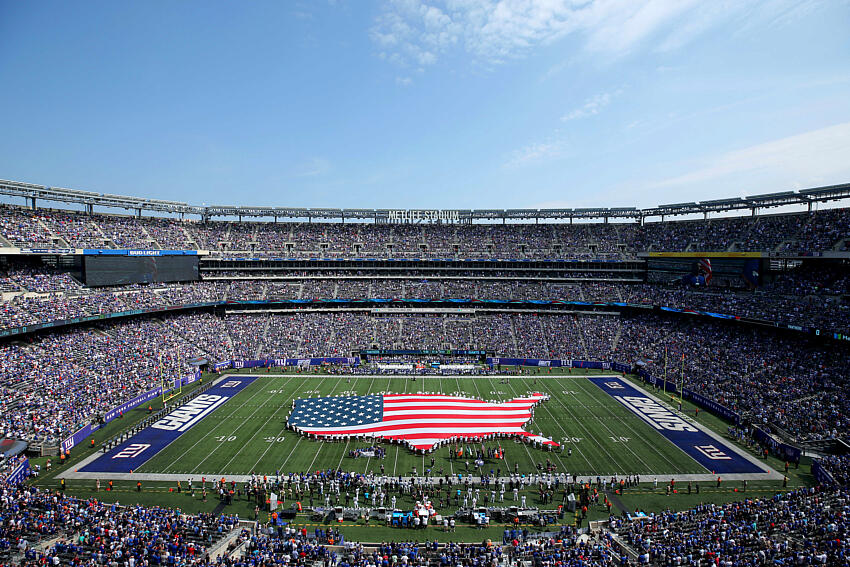As it did during the 2025 FIFA Club World Cup, MetLife Stadium will again host matches during the 2026 FIFA World Cup.
The question is, what makes MetLife Stadium so outstanding that it is capable of hosting such an event as the World Cup? We answer this question and many more in this post, so continue reading to learn more.
MetLife Stadium to host eight 2026 World Cup matches

Who currently plays at MetLife Stadium?
Given that MetLife is situated in New Jersey, which is close to the city of New York, it is perhaps no surprise to learn that the two New York-based teams share this stadium.
However, what may surprise you is that neither of the two is a football team, at least not in a European sense of the game. The two sides are the New York Giants and the New York Jets, both of which are American Football teams.
If you are new to American Football, it may be worth noting that both sides represent different conferences within the sport, with the Giants a member of the National Football Conference and the Jets a member of the American Football Conference.
Which 2026 FIFA World Cup matches will be played at MetLife Stadium?
MetLife Stadium will host the final game of the 2026 FIFA World Cup. This, many would argue, is because it successfully hosted the 2025 Club World Cup final.
However, as you will find out later in this post, MetLife Stadium has a lot to offer apart from its massive capacity of 82,500. During the tournament, the venue will be known as New York New Jersey Stadium.
According to the FIFA schedule for the 2026 tournament, a total of eight matches will be staged at MetLife. They include five group-stage matches, one game in the round of 32 and the round of 16, and, of course, the final.
A brief history of the MetLife Stadium
The MetLife Stadium was built to replace its predecessor, Giants Stadium, which had served as the long-time home of both the New York Giants and the New York Jets.
As Giants neared 30 years of use, signs of wear and outdated facilities made it clear that a new, modern venue was needed.
At the same time, the Jets explored a separate project – the proposed West Side Stadium in Manhattan – initially designed as the main venue for New York’s 2012 Olympic bid and later intended as the Jets’ new home.
The plan relied heavily on public funding and collapsed in 2005 after political opposition and resistance from groups including Cablevision, then owners of Madison Square Garden.
The new ground was originally not meant to be shared, as the Jets pursued their Manhattan site near Madison Square Garden, but once that project fell through, the two clubs shifted toward a joint venture.
As a result, MetLife Stadium came into existence, which opened in April 2010 at an estimated cost of £1.2 billion, making it the most expensive stadium in the United States at the time.
The venue comprises three bowls, each with a different capacity. The Lower Bowl seats 33,346, the Middle Bowl 21,323, and the Upper Bowl 27,897, giving MetLife a total capacity of 82,500.
What makes MetLife Stadium worthy of hosting a World Cup?

Technologically advanced
Aside from just its massive size, its capacity of 82,500 makes it considerably larger than Manchester United's Old Trafford. The MetLife Stadium is also incredibly modern.
In addition to a 360-degree ribbon board that circulates the stadium and state-of-the-art cash registers designed to save transaction time, the stadium also features four huge display boards in each corner.
These boards, measuring 30 inches by 118 inches, ensure that every spectator inside the ground has an excellent view of any highlights or replays that are shown.
Award-winning stadium
The MetLife Stadium has also been received incredibly well by critics throughout its 14-year lifespan.
Since it was opened in 2010, the facility has been named the ‘Highest Grossing Stadium of the Year' nine times by Billboard, as well as the ‘2017 Stadium of the Year' by Stadium Business.
It was also the first NFL stadium to receive Safety Act certification from the U.S. Department of Homeland Security in 2013 and has won numerous other security-based awards.
A proven track record
Perhaps more important than those awards, however, is the fact that the ground already has a proven track record of successfully hosting multiple major events across various industries.
These events include the Super Bowl XLVIII, WrestleMania on two separate occasions, a plethora of music concerts, and the 2016 Copa America Final, contested between Argentina and Chile.
The success of the 2016 Copa America Final is of particular interest, as it was, of course, the clearest indicator that the ground could transition from hosting American sports to successfully hosting worldwide sports, such as football.
